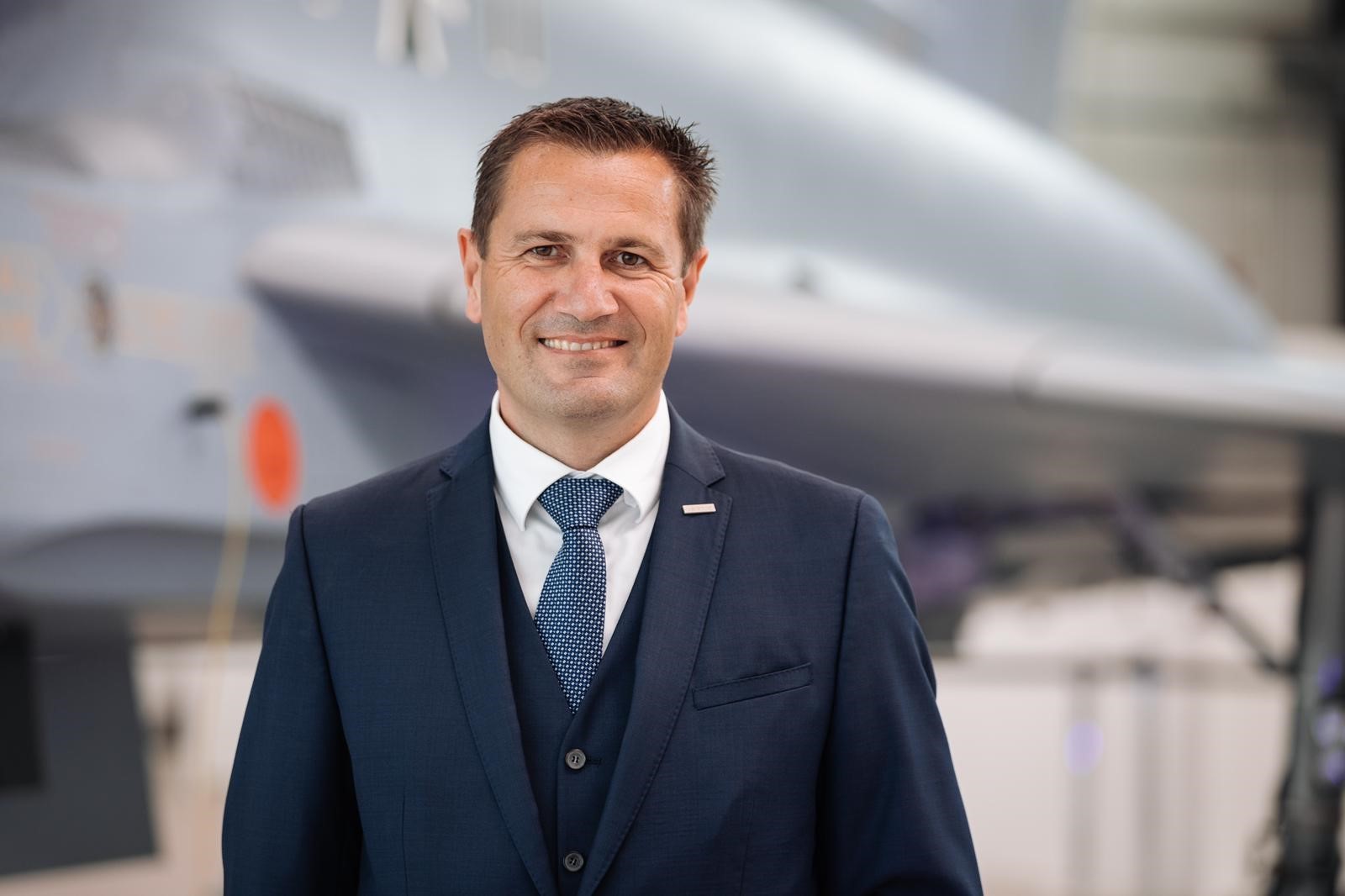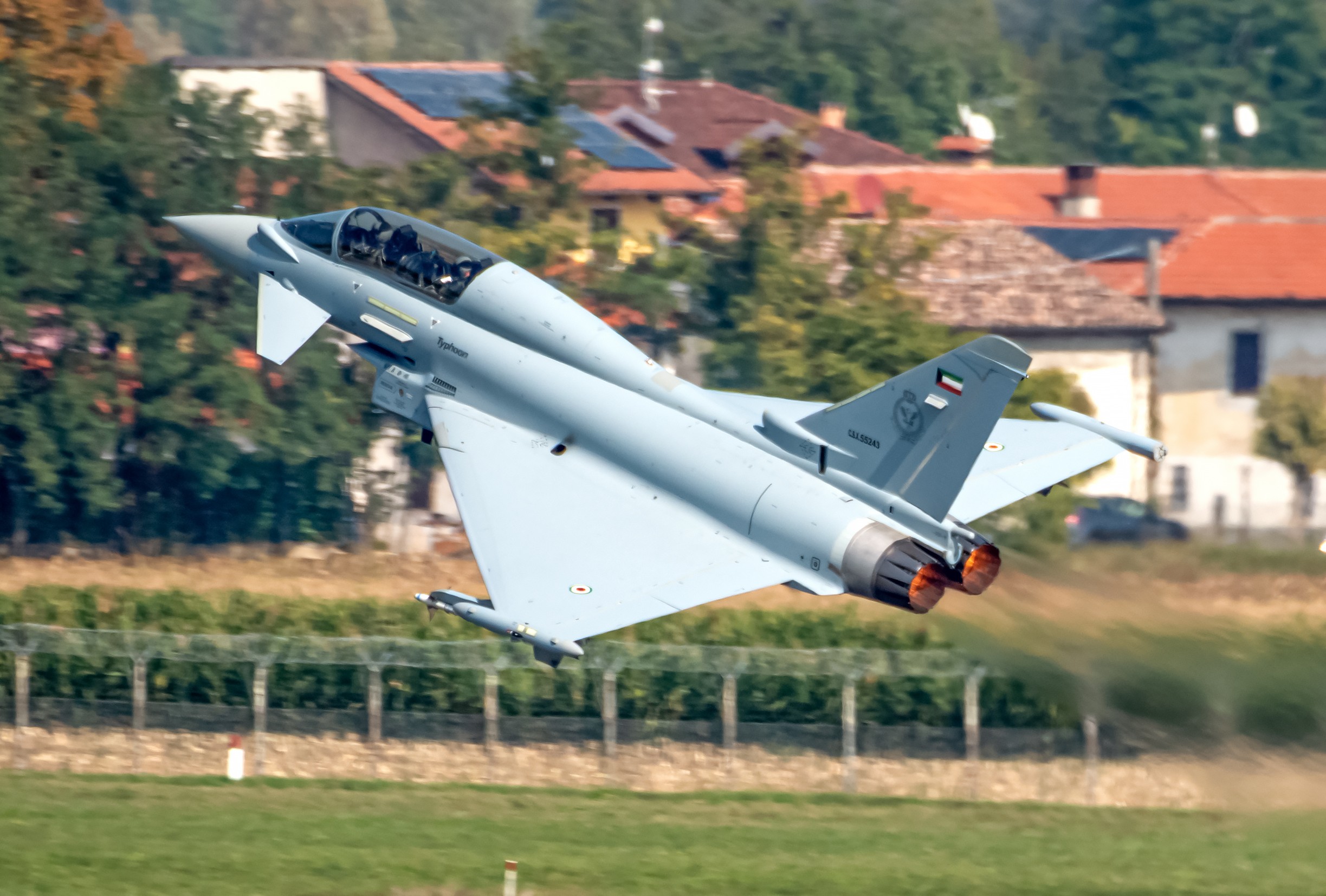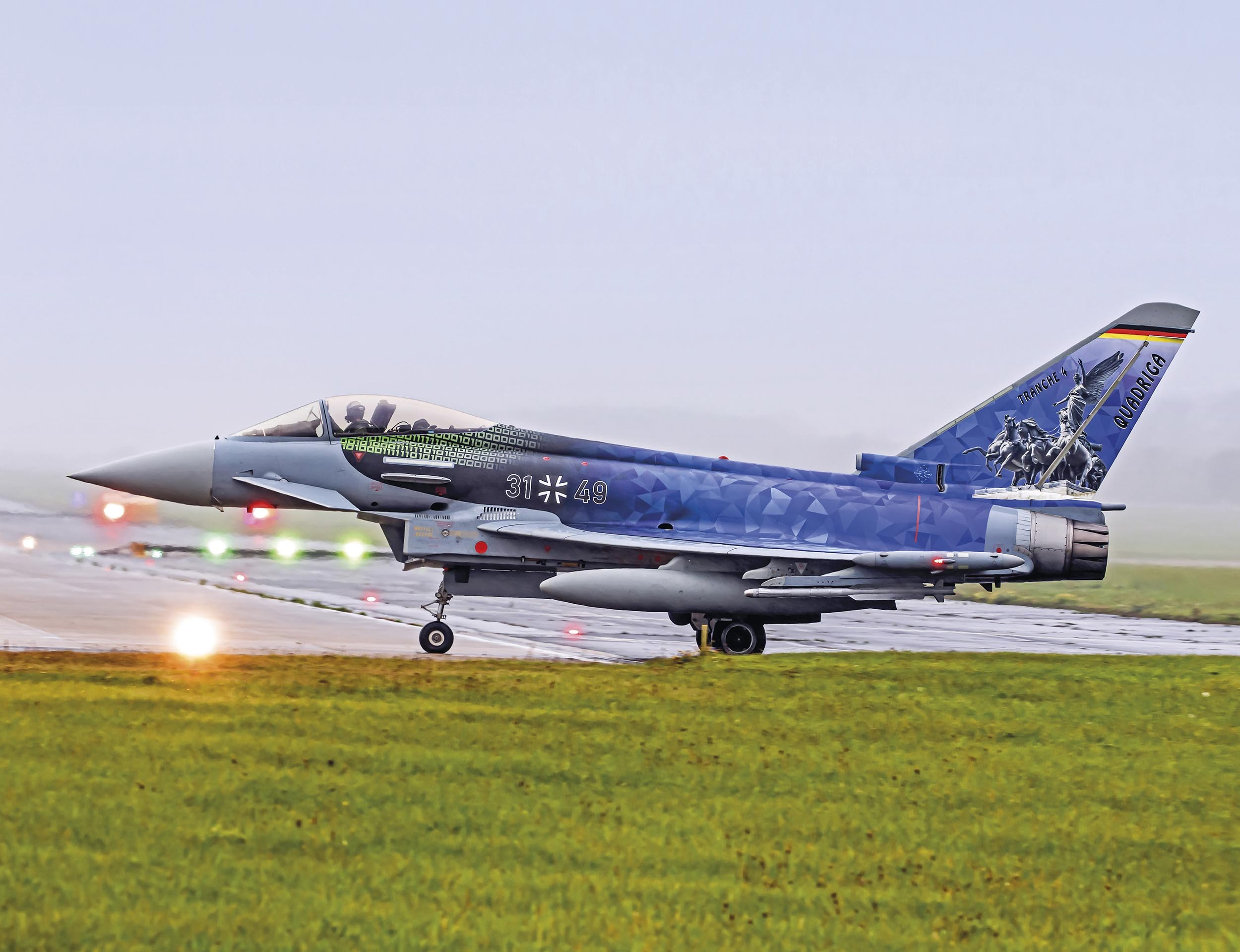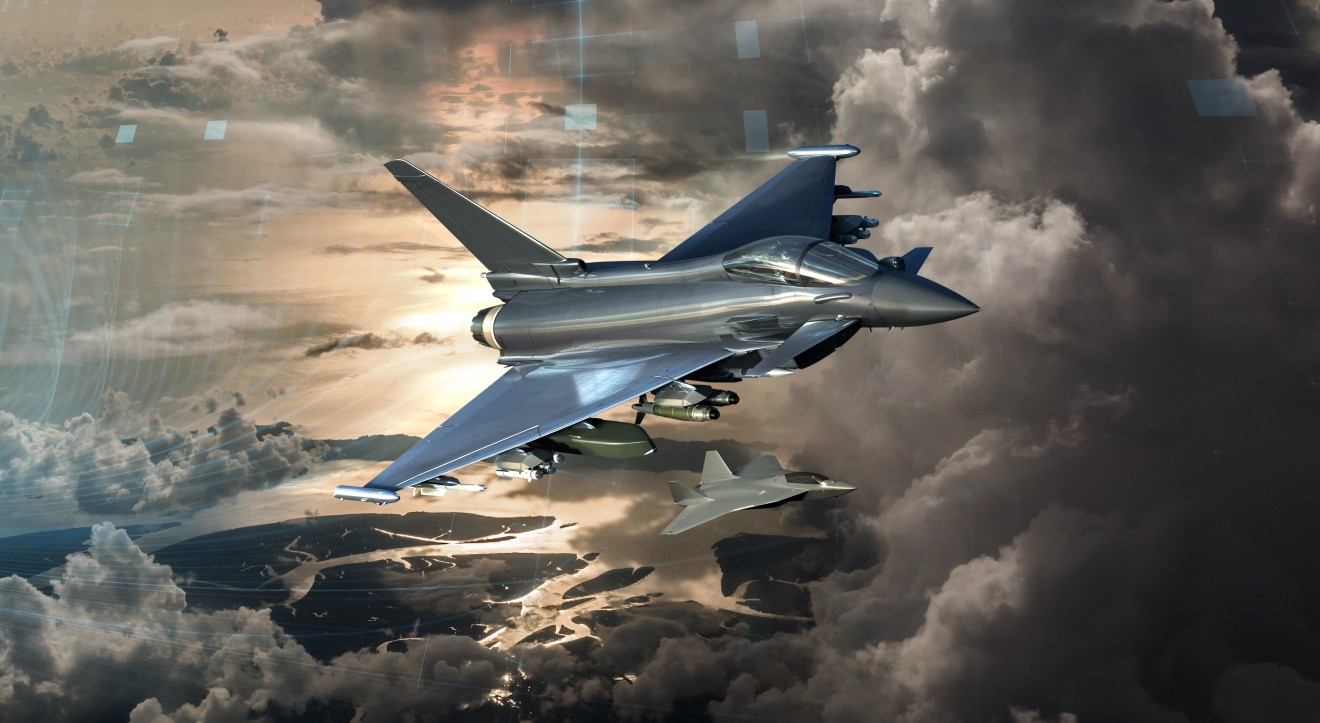
In 2022, how important is the Eurofighter programme for European defence industries?
Eurofighter remains the defence programme in Europe. It was founded to bring Europe’s military aircraft industries together and, when you look to the future, such collaboration is more important than ever.
In fact, this industrial footprint will be further strengthened through the Eurofighter programme to ensure Europe can take on future challenges and support co-operation programmes. How? Well, looking at the requirements of the air forces across Europe, it’s clear that you need a stable platform like Typhoon where you can mature future technologies. For example, in areas like enhanced communications, additional weapons or airborne electronic attack, capability can only be developed if we have a stable industrial foundation — and this is secured by the Eurofighter programme.
How is the Eurofighter programme currently performing?
From an in-service perspective, we are doing a very good job with high availability rates across the airforces. Just before Christmas we hit a significant landmark when we delivered the first two aircraft equipped with E-Scan radar to Kuwait. And later this year we will have another big milestone to celebrate with the delivery of the first production aircraft to Qatar.

Picture credit: Alessandro Maggia
Where does Eurofighter fit as nations look to future combat systems?
We're in the early stages of the next generation fighter development across Europe, but regardless of whether a nation goes for FCAS or Tempest, it’s clear Typhoon will be vital to developing a platform capable of dealing with future threats.
For example, we know that survival in a future threat environment will demand a different way of communicating. But to mature the necessary technology we need to invest and start the development now. Once matured it can then to be brought onto Typhoon and later onto the next generation fighter. Developing new technologies from scratch — under normal development cycles of pre-development, development, prototyping and production — means high risk. Typhoon helps de-risk this cycle.
So, how exactly will Eurofighter evolve — what is the next step on this process?
It’s clear that we need to continue the capability development of Typhoon to ensure that the aircraft maintains optimum operational performance in the 2040s, 2050 and beyond. As we look to these future decades and consider the threat environment, the four core-nations (Germany, Spain, UK and Italy) and their respective industry partners (Airbus; Leonardo; BAE Systems), alongside teams from Eurofighter and NETMA, have been managing a Long Term Evolution (LTE) study to agree how we collectively deliver the required capabilities. We will maintain this positive dialogue and drive a consistent approach towards meeting future threats while satisfying the respective national interests.
As these LTE study conclusions are formalised over the coming months there are already discussions about bringing forward additional capabilities, including new weapon integration under what’s known as P4E. Beyond this, we aim to deliver greater processing power, new computers and new avionics, to effectively future-proof Typhoon. The platform will have the required computing power to maintain effective operations over the coming decades.
Does the Typhoon remain a key asset for the German Air Force and other Air Forces?
Without a doubt. Germany has made significant investments into Eurofighter in the last two-and-a-half years. First, in the shape of the E-Scan radar upgrade contract for its Tranche two and three fleet. Then with the Quadriga contract award — the replacement of Tranche one aircraft with 38 Tranche four jets. These contracts underscore the nation’s strong commitment to Typhoon and signal to the world that Germany will fly the aircraft for many decades to come. It’s a message that others have taken note of.
In addition, we strongly believe there are opportunities for second batch orders from existing customers in the Middle East. Now we can offer more capabilities, I'm sure there are chances for us to secure more orders.
Another big opportunity for us this year is the decision by the German government over the German Air Force Tornado replacement. We believe Eurofighter can deliver the required capabilities in the given timescale and we are looking forward for this decision.

Picture credit: Martin Agüera
